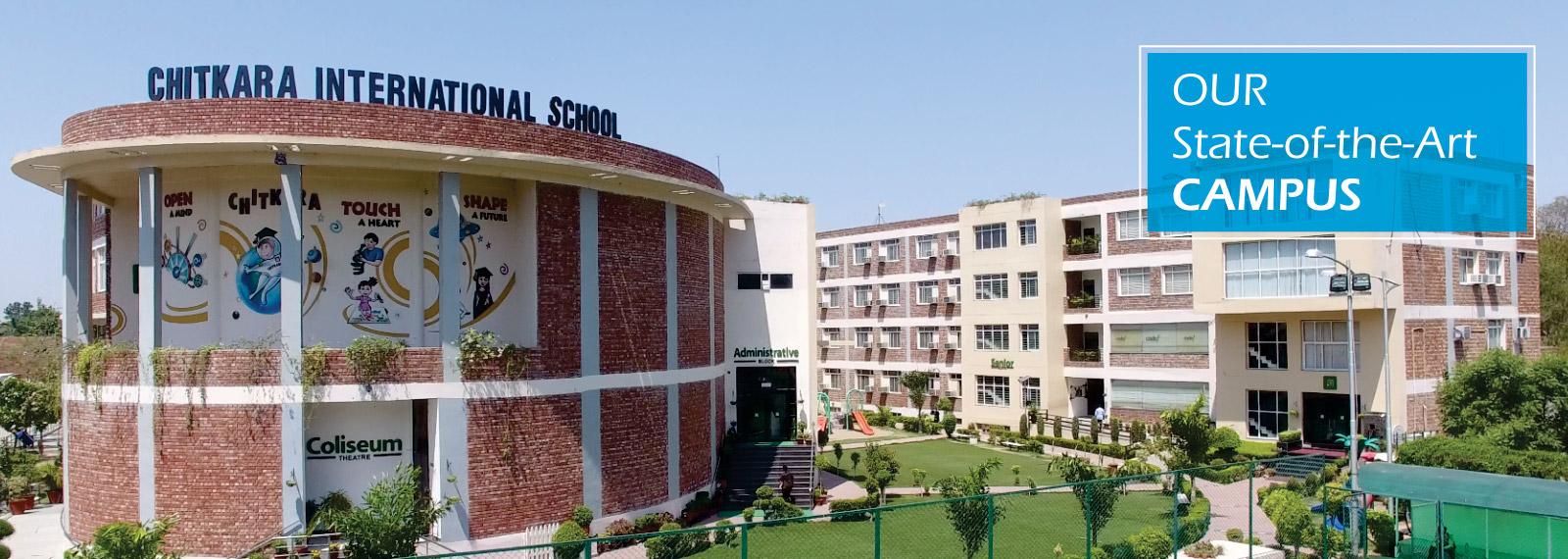Assessments
At Chitkara International School (CIS), there is a clear distinction between Measurement, Evaluation, and Assessment, which are often used interchangeably. Assessment is the core focus of the school and where it excels. “Assessment Quotient” is a book by Dr Niyati Chitkara, published internationally by Lambert Academic Publishing, a German publishing house.
The assessments at CIS are designed with consideration for the CBSE curriculum, Sustainable Development Goals (SDGs), and the National Education Policy (NEP) 2020. They are research-based, aligned with the principles of the Assessment Quotient, and aim to provide a comprehensive learning experience rather than simply testing or judging a learner’s performance.
A practical and innovative approach is employed in planning, designing, and implementing assessments in both scholastic and co-scholastic areas, with appropriate feedback and reporting provided to learners. Thus, assessments at Chitkara encompass both scholastic and co-scholastic areas, including:
- Assessment of Learning
- Assessment for Learning
- Assessment as Learning
- Assessment in Learning
-
Assessment of Learning
The assessment of learning is defined as a process in which an individual describes and quantifies another’s knowledge, attitudes, or skills. In this process, teacher direction is paramount, with the student having minimal involvement in designing or implementing the assessment.
In this approach:
- The teacher designs the learning activities.
- The teacher collects evidence of learning.
- The teacher judges what has been learned and what has not been learned.
-
Assessment for Learning
Assessment for learning involves increased student autonomy, though it still requires teacher guidance and collaboration. The focus is on providing constructive feedback and advice to students rather than simply assigning marks or grades.
In this approach:
- The teacher designs the learning activities.
- The teacher designs assessments with feedback for the student.
- The teacher judges what has been learned, while the student develops insight into what has not been learned.
-
Assessment as Learning
Assessment as learning is closely associated with diagnostic assessment and often incorporates peer learning. This type of assessment is relevant in contexts such as blended learning, e-learning, and applied learning. It creates opportunities for self-assessment and peer assessment, with students taking greater responsibility for generating quality information about their own learning and that of their peers.
In this approach:
- The teacher and student co-construct the learning process.
- The teacher and student co-construct the assessment.
- The teacher and student co-construct a learning progress map.
-
Assessment in Learning
Assessment in learning places the question at the centre of teaching and learning. It becomes more prominent when open-ended learning and creativity are encouraged. This approach shifts the focus from seeking a “correct answer” to exploring a “fertile question”. Through enquiry, students engage in processes that generate feedback about their learning from various sources and activities. This feedback contributes to the development of other learning activities, lines of enquiry, and new questions.
In this approach:
- The student is at the centre of learning.
- The student monitors, assesses, and reflects on their learning.
- The student initiates demonstrations of learning to themselves and others.
- The teacher acts as a coach and mentor.
Both students and teachers need to understand the purpose of each assessment strategy. The overall assessment “package” should accurately capture, generate, and use meaningful learning information to promote deep learning and understanding.
To study assessments at Chitkara International School, two perspectives can be analysed:
- The Scholastic areas of assessment
- The Co-Scholastic areas of assessment
Innovation at Chitkara International School: Scholastic and Co-Scholastic Areas of Assessment
- The Scholastic Areas of Assessment
At Chitkara International School, the assessment process is innovative, extending beyond traditional pen-and-paper tests to include a variety of methods designed to evaluate a child’s mastery of concepts comprehensively. This includes open-book and open-web examinations, revision through teaching sessions (RTTS), knowledge polish, and creative techniques such as thinking out-of-the-box questionnaires, word walls, brainwork activities, and word searches. While CBSE’s Unit Tests and Term Exams are integral to the assessment blueprint, these diverse formats are seamlessly integrated into the overall evaluation framework. Advanced diagnostic software, grounded in Classical Test Theory (CTT) or Item Response Theory (IRT), is employed to provide precise statistical insights into student performance, marking a significant advancement in educational assessment. - The Co-Scholastic Areas of Assessment
In the co-scholastic areas, the focus is on non-academic aspects of student development, such as dance, music, school clubs, health, personality, and social values. Assessment criteria emphasise regularity, enthusiastic participation, output, and teamwork in areas like Work Education, Art Education, and Health and Physical Education. Additionally, students are assessed on discipline, considering factors such as attendance, sincerity, behaviour, values, tidiness, adherence to rules and regulations, and their attitude towards society, the nation, and others.
Furthermore, feedback forms and reporting formats are uniquely designed with the learner’s psychology in mind, ensuring that assessments are both informative and supportive of the student’s overall development.















































